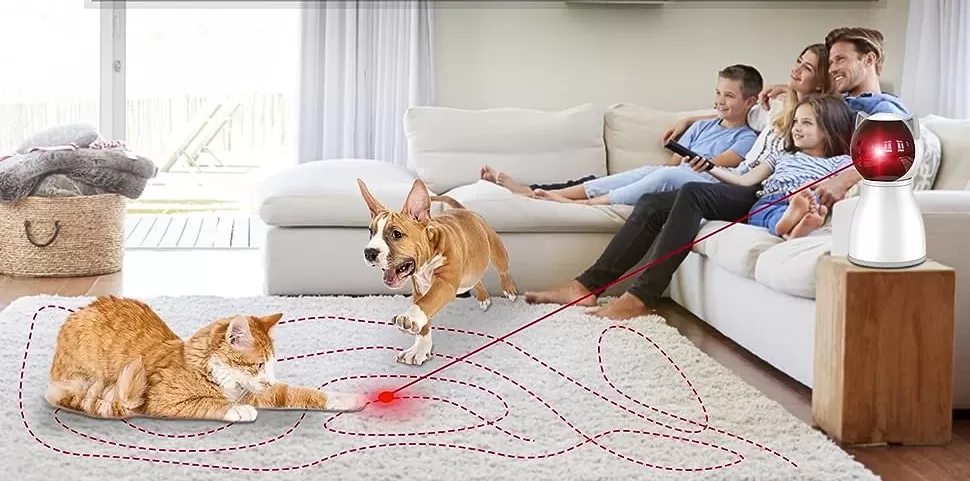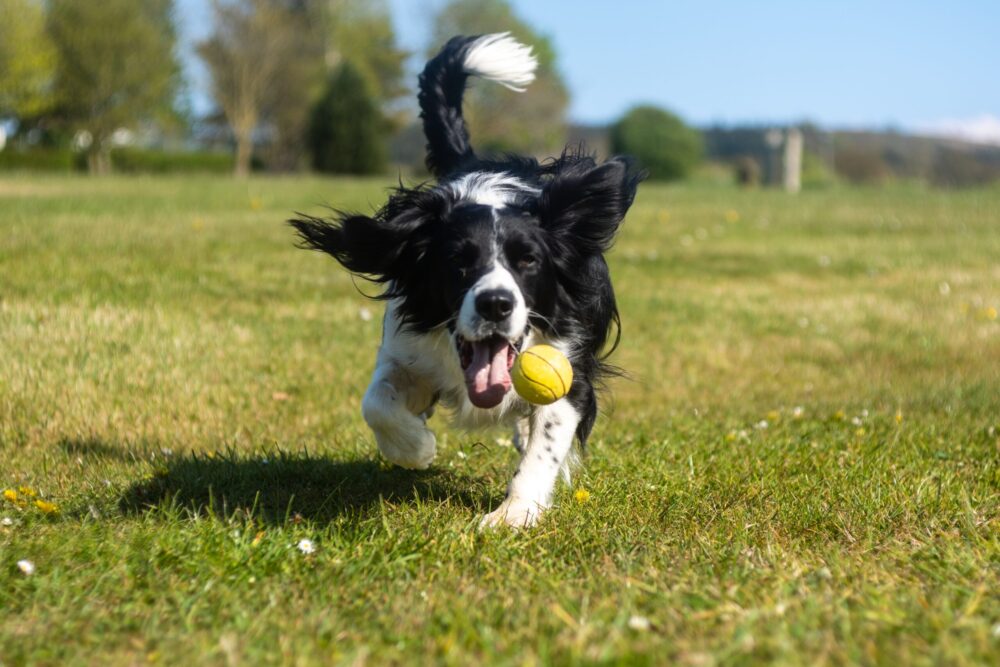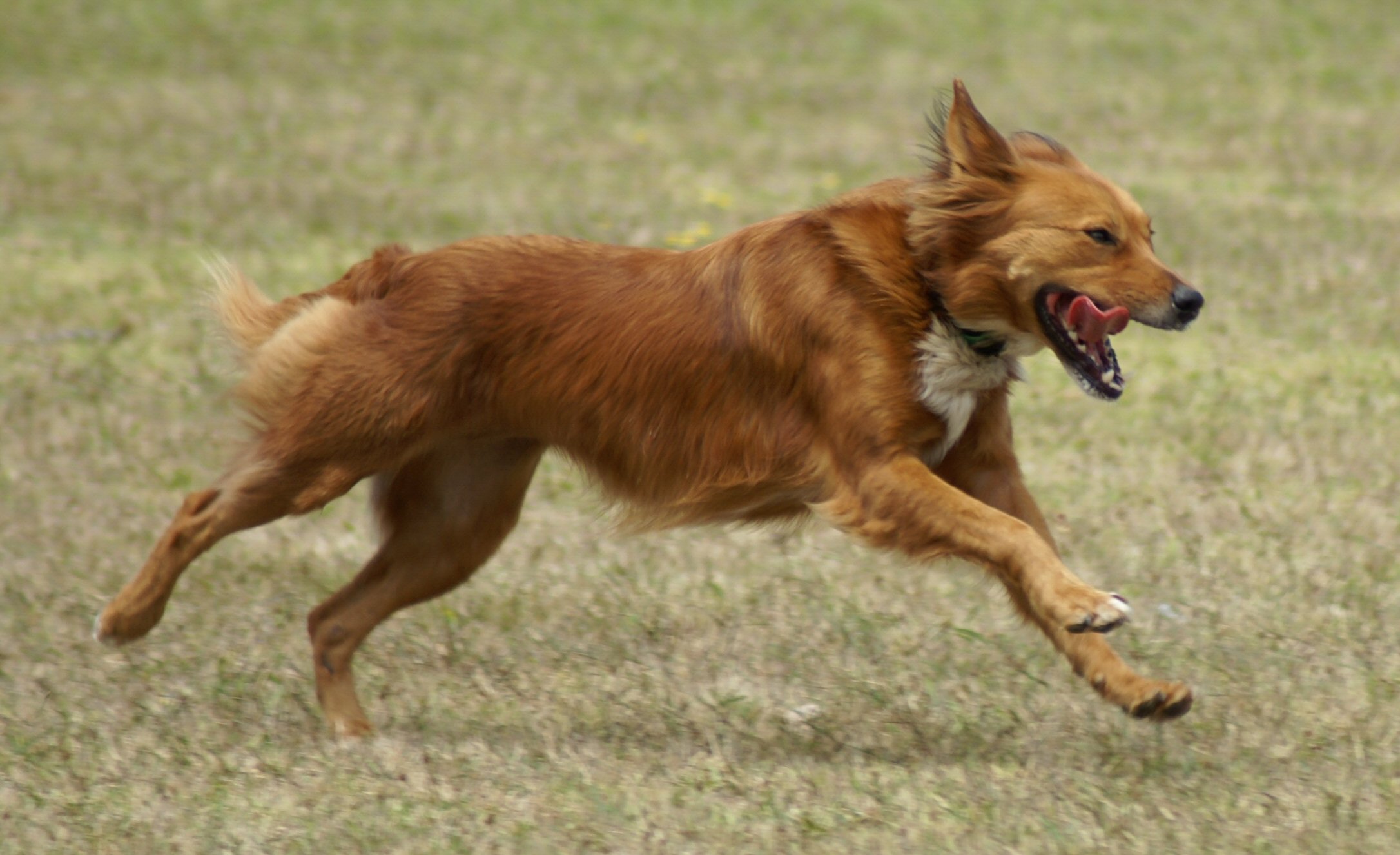Last Updated on June 10, 2024
Want a safe and easy way to keep your furry friend contained without building a traditional fence? Remember how Shia LaBeouf’s character in Disturbia used a wireless fence to track his probation boundaries? You can use similar technology for your canine companion! Wireless dog fences offer a practical and increasingly popular alternative to physical barriers. Let’s explore their functionality, benefits, drawbacks, and top product recommendations.
Understanding Wireless Dog Fences
A wireless dog fence system typically includes two main components:
- Transmitter: This device plugs into a standard outlet in your home and emits a radio signal, creating a circular boundary around your yard.
- Collar: Your dog wears a receiver collar that picks up the transmitter’s signal. As your dog approaches the boundary, the collar emits a warning beep. If they cross the boundary, the collar delivers a mild static correction, prompting them to return to the safe zone.
Benefits of Choosing a Wireless Dog Fence
Tired of your four-legged escape artist testing the limits of your yard? Ditch the idea of a traditional fence and embrace the future of pet containment! Choosing a wireless dog fence offers a multitude of advantages that benefit both you and your furry friend. Let’s explore why this innovative solution might be the perfect choice for your home.
- Install it Easily: Unlike traditional fences that require digging, concrete, and construction time, you can set up wireless fences quickly and easily. Most systems take only a couple of hours to install.
- Save Money: Wireless fences are generally more affordable than traditional fencing, especially for larger yards.
- Enjoy Portability: Many wireless fence systems are portable, allowing you to create a safe space for your dog wherever you go, such as camping trips or vacations.
- Maintain Open Views: Say goodbye to bulky fences blocking your view. Wireless fences preserve the aesthetic appeal of your yard.
- Customize Boundaries: You can easily adjust the boundary size and shape to fit your needs, avoiding obstacles like gardens or pools.
Comparing Perimeter Containment Options for Dogs
Choosing the right type of fence for your canine companion involves weighing the pros and cons of different options. Let’s explore the three main contenders:
1. Wooden Fences:
The classic wooden fence is a familiar sight in neighborhoods everywhere. It provides a visible and sturdy barrier that clearly defines your property line. However, this traditional option comes with its own set of considerations.
- Pros: Familiar and traditional option.
- Cons: Building them takes time and money, they require maintenance, and they can obstruct views.
2. In-Ground Fences:
For a less visually obtrusive option, consider an in-ground fence. This system utilizes buried wires to create a hidden boundary that keeps your dog contained without impacting your yard’s aesthetics. However, installation requires some digging and planning.
- Pros: Create custom shapes and are less visually obtrusive than wooden fences.
- Cons: Burying wires can damage landscaping, and they are not easily portable.
3. Wireless Dog Fences:
Embrace modern technology with a wireless dog fence. This innovative system utilizes radio signals to create a circular boundary around your home, offering convenience and flexibility without the need for physical barriers.
- Pros: Offer easy installation, cost-effectiveness, portability, adjustable boundaries, and no view obstruction.
- Cons: May not be suitable for all dogs (e.g., those with aggressive tendencies), and their range can be affected by terrain and interference.
Choosing the Right Wireless Dog Fence: Key Factors
With numerous wireless dog fence systems available, selecting the best one for your furry friend can feel overwhelming. Consider these key factors:
- Dog’s Safety: Prioritize systems with adjustable static correction levels to suit your dog’s temperament and size.
- Transmission Radius: Ensure the system’s range adequately covers your yard size.
- Reliability: Look for systems with proven track records of consistent performance and minimal signal interference.
- Number of Dogs: If you have multiple dogs, choose a system that supports additional collars.
Top Wireless Dog Fence Recommendations
Here are two top-rated wireless dog fence systems from PetSafe, a trusted brand in pet containment:
1. PetSafe Wireless Pet Containment System, PIF-300
Looking for a reliable and straightforward wireless fence system to keep your furry friend safe within a large area? The PetSafe Wireless Pet Containment System (PIF-300) might be the perfect solution. This system boasts a generous coverage area, making it suitable for spacious yards. Its user-friendly design and consistent performance have made it a popular choice among pet owners.
Pros: Offers a large coverage area (up to 180-foot diameter), supports multiple dogs, includes a waterproof collar, and provides reliable performance.
Cons: Not portable
2. PetSafe PIF00-12917 Stay and Play Wireless Fence
If you crave flexibility and portability without compromising on coverage, the PetSafe Stay & Play Wireless Fence (PIF00-12917) is an excellent choice. This system allows you to create a safe haven for your dog wherever you go, whether it’s a camping trip, a visit to a friend’s house, or simply moving between different areas of your yard. Its rechargeable collar and tone-only training mode add to its appeal.
Pros: Features a portable design, wide coverage area (up to 210-foot diameter), support for multiple dogs, a rechargeable collar, and a tone-only mode for training.
Cons: None.
How Wireless Dog Fences Work: A Closer Look
Curious about the technology that keeps your canine companion safely within their boundaries? Wireless dog fences utilize invisible signals to create a containment area, acting as an invisible fence. Let’s delve deeper into the two main types:
Radio-Frequency (RF) Systems:
These systems rely on radio waves to establish a circular boundary around your home. Here’s how they work:
- Transmitter Emits Signals: The transmitter, plugged into a standard outlet, emits radio frequency signals that radiate outward, creating a circular containment zone.
- Collar Receives Signals: Your dog wears a receiver collar that picks up these radio waves.
- Boundary Warning: As your dog approaches the edge of the defined boundary, the collar emits a warning beep, alerting them that they’re nearing the limit.
- Gentle Correction: If your dog continues past the warning beep and crosses the boundary, the collar delivers a mild static correction. This sensation is harmless but startling, encouraging your dog to retreat back into the safe zone.
GPS Systems:
For larger areas or more customizable boundaries, GPS-based systems offer a sophisticated solution:
- Satellite-Based Boundary: Instead of relying on a central transmitter, GPS systems utilize satellite signals to define the containment area.
- Collar Tracks Location: The collar, equipped with a GPS receiver, constantly tracks your dog’s location in relation to the pre-set boundaries.
- Boundary Alerts and Correction: Similar to RF systems, GPS collars emit warning beeps as your dog approaches the boundary and deliver a static correction if they cross the line.
- Enhanced Customization: GPS systems often allow for greater customization, enabling you to define complex boundary shapes and even create “off-limit” zones within your property.
Key Considerations:
- Signal Interference: Both RF and GPS signals can be affected by terrain, metal objects, and electronic devices. Choose the transmitter location carefully and be mindful of potential interference sources.
- Training is Crucial: Regardless of the system you choose, proper training is paramount. Gradually acclimate your dog to the boundary, reinforce positive behavior, and use the system’s training features effectively.
FAQs about Wireless Dog Fences
Q: Are wireless dog fences safe?
A: When you use them correctly and with proper training, wireless dog fences are generally safe. However, choosing appropriate correction levels and consulting with a professional trainer is crucial, especially for dogs with behavioral concerns.
Q: How large of an area can a wireless dog fence cover?
A: Coverage varies depending on the model. RF systems typically cover up to 1 acre, while GPS systems can encompass much larger areas.
Q: How long does the collar battery last?
A: Battery life depends on the model and usage, generally ranging from 2 to 5 days. Look for collars with low battery indicators.
Q: Can I adjust or expand the boundary?
A: Yes, most wireless dog fences offer adjustable boundary settings. Some models allow for expansion by adding extra transmitters.
Q: How do I train my dog to use a wireless dog fence?
A: Training is essential! Introduce the boundary gradually, reward your dog for staying within the safe zone, and use the system’s training features (like tone-only mode) effectively. Approach training with patience and positive reinforcement.
Q: Will a wireless dog fence work for all dog breeds?
A: While suitable for most breeds, consider your dog’s size and temperament. Smaller dogs may need lower correction levels, while larger or more stubborn dogs might require higher settings.
Q: Can I use a wireless dog fence for multiple dogs?
A: Many systems support multiple collars. Check if the manufacturer includes additional collars or if you need to purchase them separately.
Q: What factors can interfere with wireless dog fence performance?
A: Terrain, weather, and electronic devices can impact signal strength. Metal objects, thick walls, and appliances near the transmitter can cause interference. Choose the transmitter location carefully.
Conclusion
Wireless dog fences offer a convenient, affordable, and flexible solution for keeping your furry friend safe and contained within your property. By understanding the different types, features, and training requirements, you can choose the best system for your dog’s needs. Enjoy peace of mind knowing they have a secure space to play and roam freely. Remember, responsible pet ownership includes proper training and supervision, even with the added security of a wireless fence.
 Dog N Treats All dogs deserve to be pampered
Dog N Treats All dogs deserve to be pampered





